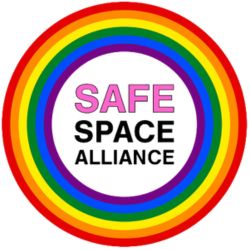By Katie Frauenfelder, MA, LPC, NASM CPT, Director of Diversity and Inclusion
What comes to mind when you think of Pride month? I’m going to guess your mind goes to images of extravagant colorful parades, emotion-filled protests, RuPaul-esque drag shows, businesses displaying rainbow decor in storefront windows, and corporate workplaces creating team building activities designed to reflect on sexual orientation inequities. It is a month dedicated to the LGBTQ community to honor their voices and experiences, celebrate their genders and sexualities, and draw attention to issues this community still faces today. But do you know Pride month’s origin?
It all began with the Stonewall Uprising in New York City on June 28, 1969. The Stonewall Inn was a gay club located in Greenwich Village. It was known for welcoming drag queens and members of the queer community, despite it being a crime for people to “masquerade” as a member of the opposite sex. On June 28, 1969, NYPD raided the club, and it is reported that several police officers demanded to ‘check the sex’ of some of the club’s patrons by physical examination. Fed up with decades of raids and brutality at the hands of NYC’s law enforcement, the LGBTQ community had finally had enough, prompting a series of riots and protests following this incident. The five days of rioting that followed provided a spark that ignited the LGBTQ rights movement in the United States.
The Stonewall Uprising prompted the LGBTQ community and its allies to build on this spark of resistance. The following year a march was organized in New York City that went along Greenwich Village’s Christopher Street which runs past the Stonewall Inn and ended in Central Park. The march was called “Christopher Street Liberation Day” and adopted the theme of “Gay Pride” with its participants demonstrating their support for equal rights.
The early demonstrations often focused simply on participants being proud to be “out of the closet”, on individual freedom, and on the diversity of the LGBTQ community. By the 1980s, political and social activism had become central to Pride events, and many of the marchers carried posters and signs that were focused on the social issues of the day. Acceptance of the LGBTQ community began increasing, and more people began participating in the marches. Today, marches and celebrations attract hundreds of thousands of people and are held in many parts of the globe.


